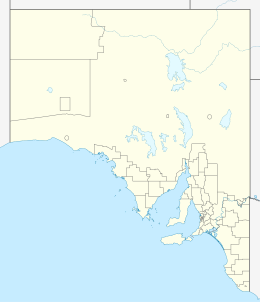Busby Islet
| Geography | |
|---|---|
| Location | Nepean Bay |
| Coordinates | 35°37′27″S 137°38′26″E / 35.62416°S 137.6405°ECoordinates: 35°37′27″S 137°38′26″E / 35.62416°S 137.6405°E |
| Area | 10 ha (25 acres) |
| Highest elevation | 1 m (3 ft) |
| Administration | |
|
Australia
|
|
| Demographics | |
| Population | 0 |
Busby Islet (also known as Bushy Island and Anchorage Island) is an islet in the Australian state of South Australia located in Nepean Bay on the north coast of Kangaroo Island about 2 kilometres (1.2 miles) north of the municipal seat of Kingscote. The islet and adjoining areas are notable as habitat for bird life. The islet has enjoyed protected area status since 1909 and since at least 1972, have been part of the Busby Islet Conservation Park.
Busby Islet is an islet located in Nepean Bay about 2 kilometres (1.2 miles) east of Kingscote on Kangaroo Island in South Australia. Busby Islet along with the Beatrice Islets are three high points on the southern edge of a spit that is exposed at low water. The spit which is named ‘The Spit’ extends from Cape Rouge about 5 kilometres (3.1 miles) north of Kingscote in a south easterly direction across the opening of the Bay of Shoals for a distance of about 5 nautical miles (9.3 kilometres; 5.8 miles). Busby Islet covers an area of about 10 hectares (25 acres) and as of 1996 had a maximum elevation of one metre (3.3 ft).
The conditions for the creation of The Spit and therefore Busby Islet and the Beatrice Islets became possible about 7500 years ago when sea levels reached current levels. The islet is composed of sand and sandgrit, which has formed into 'low dunes' at the islet's summit. The islet is part of a drying spit at low water which falls to a depth of 5 m (16 ft) within about 0.25 km (0.16 mi) to the south.
As of 1996, Busby Islet was reported as supporting a ‘low shrubland of highly salt-tolerant succulents such as grey samphire, glassworts and Austral seablite’ while the summit of the island supports ‘marginally less salt tolerant nitre bush and African boxthorn.’
...
Wikipedia

